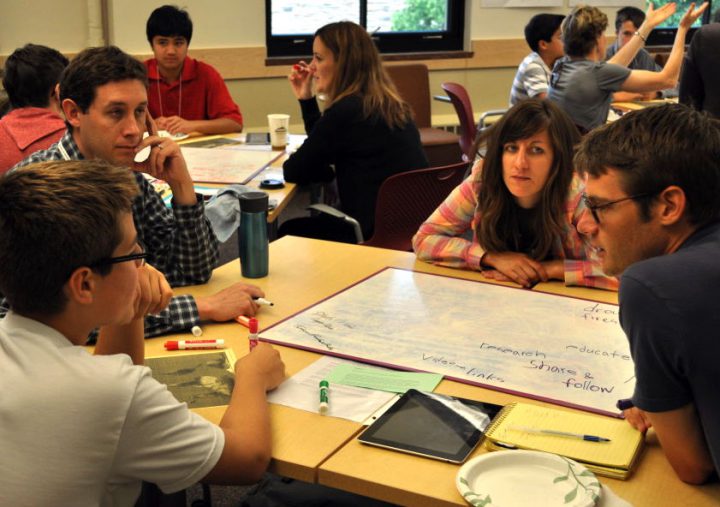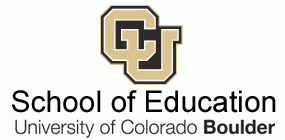Research Brief: Supporting teacher professional communities to implement school-wide initiatives

- Penuel, W., Riel, M., Krause, A., & Frank, K. (2009). Analyzing teachers’ professional interactions in a school as social capital. The Teachers College Record, 111(1), 124-163.
Social network analysis and qualitative case study methods documented formal and informal teacher interaction with peers. Social network theory allowed for a focus on how teachers’ relationships and interactions within a school can help them gain access to expertise and resources, and create professional learning contexts that are more or less supportive of schoolwide improvement.
Summary
This study of the teacher professional communities in two elementary schools shows that school improvement initiatives are more successful when teachers’ formal and informal interactions regularly support the sharing of expertise and resources. The authors show that the strength of teacher professional communities requires more than time dedicated to collaboration or access to resources, but lies in the formal and informal relationships of sharing expertise, as well as aspects of school leadership and how accountability is structured.
Authors:
BY JULIE CAFARELLA AND BILL PENUEL | OCTOBER 2015
Implications for Practice
This study reminds us that open, non-hierarchical communication helps foster teacher professional communities that can effectively implement school improvement initiatives. “Extensive and fluid” interaction can help support collegial ties and trust among teachers, principals, and coaches. School principals aiming to promote a school-wide change should consider that teachers need time to meet with one another to share resources and develop community-wide goals for using new materials, and improving instructional practices and student learning. It is also important that when professional development incorporates strategies and materials from outside experts, the PD acknowledge and engage teachers’ experience and teaching practices. Additionally, districts and schools should consider how specialists, such as literacy coaches, can support teachers in learning from one another, in order to meet collective, school-wide goals.
Research Findings
Through explanatory case studies of two elementary schools, this paper examines teacher professional communities and social networks in schools aiming for improved literacy instruction. In each case, the principal of the school believed that increased teacher interaction could improve literacy instruction. In these communities, accountability shifts from an individual teacher to an entire community of teachers, administrators, and support staff who share a responsibility to student success.
The study found that initiatives to improve literacy instruction were successful in one school but not the other, even though the schools shared similar student demographics, allotment of formal planning time, and access to instructional materials. Trust within the teacher community, a cohesive teaching staff, and particular supports from the principal were all crucial elements of the success of the initiative. In the school that successfully implemented the literacy initiative, teachers openly shared resources and sought out outside expertise. Groups of teachers working together, rather than individual teachers, were responsible for helping students identified as struggling with literacy. This collective effort included grade-level teacher teams who had the support of literacy coaches, the school’s principal, and specialists. The shift of accountability from individual teachers to a whole school community helped teachers develop a sense of camaraderie as well as a collective commitment to student success.
By contrast, the school that was less successful in its literacy initiative experienced a more hierarchical chain of communication, less cohesive and productive relationships between novice and experienced teachers, which inhibited teachers from sharing expertise and valuable resources with one another. In this school, the principal viewed resources and expertise (for example, professional development, specialist support) as needing to be brought in from outside the school, while teachers perceived professional development as “disconnected,” “abstract” and not drawing on their own teaching experience.
In summary, the authors of the article suggest that school communities that encourage lateral, rather than hierarchical, dissemination and sharing of knowledge and resources, are more fruitful spaces for school improvement initiatives.
Attending to Equity
This study provides a framework for better understanding how to understand the distribution of expertise and resources among an entire school community. Hierarchical chains of command can lead to unequal distribution of school resources and expertise and fractured teacher communities, which in turn, can mean that some students lack access to high quality instruction and learning environments. A commitment to equity means that entire school community must openly communicate goals and hold one another accountable for the success of all students, and that support for productive teacher networks is key to this goal.
Recommended Actions You Can Take
Review related briefs:
- Perin, S. M. (2011). Constraints and social resources for prioritizing science instruction in school
- Bevan, B. (2011). Developing communities of practice for middle school math teachers
- King, H. (2011). Professional development through school-based communities of practice
ALSO SEE STEM TEACHING TOOLS
STEM Teaching Tools content copyright 2014-22 UW Institute for Science + Math Education. All rights reserved.
This site is primarily funded by the National Science Foundation (NSF) through Award #1920249 (previously through Awards #1238253 and #1854059). Opinions expressed are not those of any funding agency.
Work is licensed under a Creative Commons Attribution-ShareAlike 4.0 Unported License. Others may adapt with attribution. Funded by the National Science Foundation (NSF). Opinions expressed are not those of any funding agency.


 Email Feedback
Email Feedback


